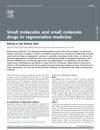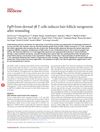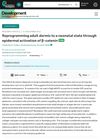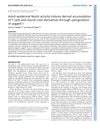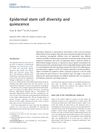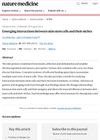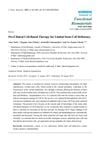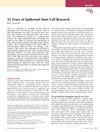Modulating the Stem Cell Niche for Tissue Regeneration
August 2014
in “
Nature Biotechnology
”
stem cell niche regenerative medicine stem cell expansion stem cell differentiation stem cell reversion cell-cell interactions cell-extracellular matrix interactions adult tissue-resident stem cells embryonic stem cells induced pluripotent stem cells genetic blood disorders cancer burn injuries cartilage defects cell transplantation immune rejection carcinogenesis combination therapies stem cell environment stem cell growth stem cell transformation cell-to-cell interactions cell-matrix interactions adult stem cells iPS cells blood disorders burn treatment cartilage repair transplant rejection cancer risk combined treatments
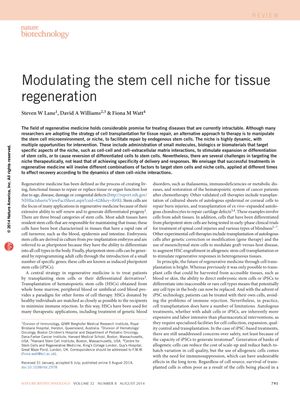
TLDR Changing the environment around stem cells could help tissue repair, but it's hard to be precise and avoid side effects.
The document from 2014 reviews the potential of regenerative medicine through the manipulation of the stem cell niche, which is the microenvironment where stem cells reside. It discusses the dynamic nature of the niche and the possibility of targeting various components, such as cell-cell and cell-extracellular matrix interactions, to stimulate stem cell expansion, differentiation, or reversion to a stem cell state. The review acknowledges the challenges of achieving specificity in therapeutic targeting and suggests that successful treatments may require combinations of factors targeting both stem cells and niche cells. It also covers the three main types of stem cells—adult tissue-resident, embryonic, and induced pluripotent stem cells—and their current use in treating conditions like genetic blood disorders, cancer, burn injuries, and cartilage defects. The limitations of cell transplantation, including cost, labor intensity, and immune rejection, are discussed. The document concludes that modifying the cellular components of the stem cell niche is feasible for regenerative purposes, but challenges remain in ensuring tissue specificity, long-term repair quality, and avoiding side effects such as carcinogenesis. Combination therapies are seen as a promising approach.
